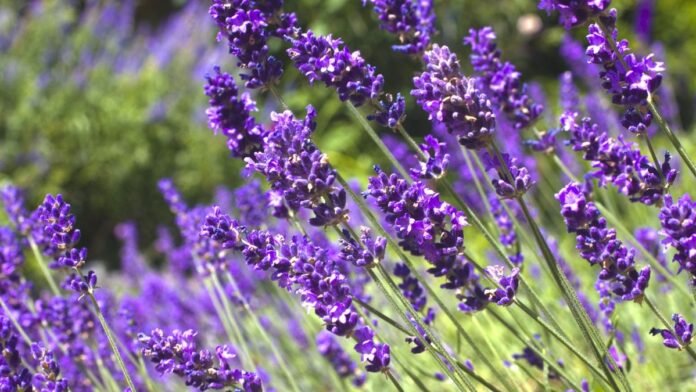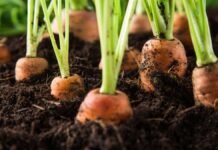Lavender is a beloved herb known for its distinct fragrance, beautiful blooms, and versatile uses—from culinary delights to aromatic therapies. Distinguished for thriving in sunny and dry environments, this perennial plant can be exceptionally rewarding to grow, especially in pots and containers. Here, we delve into everything you need to know to successfully cultivate lavender in pots, ensuring it thrives and enhances your outdoor spaces.
Understanding Lavender’s Needs
Ideal Conditions for Lavender
For lavender to flourish in pots, specific conditions must be met:
-
Pot Size: Choose a large pot with a diameter of at least 10 inches. This allows adequate space for the plant’s spreading roots.
-
Soil: Use a light and well-draining potting mix. Regular potting soil retains moisture, which can lead to root rot. Instead, opt for a combination of 3 parts soil-based potting mix, 1 part coarse sand, and 1 part perlite or compost to promote drainage.
-
Location: Position lavender in a location that receives 8-10 hours of direct sunlight daily. The sunnier, the better! Terracotta pots are ideal, as they are porous and help with moisture control.
- Watering: Lavender requires less frequent watering compared to many other plants. Allow the soil to dry out between waterings. Over-watering is a common pitfall that can lead to unhealthy plants.
Types of Lavender Best Suited for Pots
While all varieties of lavender can grow in pots, the tender and half-hardy types perform best. Spanish lavender (Lavandula stoechas) and English lavender (Lavandula angustifolia) are the most common types. Here are some recommended varieties:
-
Dwarf Varieties: Smaller varieties like ‘Thumbelina Leigh’, ‘Goodwin Creek’, and ‘Wee One’ are perfect for container gardening.
- Hardy Varieties: English lavender is known for its resilience and robustness, making it a popular choice in various climates.
Planting Lavender in Pots
Step-by-Step Guide
-
Select the Right Location: Before planting, decide on a sunny spot where your lavender will get plenty of light.
-
Choose Your Pot: Make sure it has drainage holes to facilitate proper water drainage.
-
Prepare Your Soil: Mix your chosen potting material as discussed earlier. Avoid materials like sphagnum or peat moss which retain too much moisture.
-
Planting:
- Fill the pot with your prepared soil mixture.
- Make a hole larger than the root ball of your lavender plant.
- Place the plant in the hole, ensuring it is planted at the same depth as in its nursery pot.
- Backfill the hole with soil and firm it down gently.
- Watering After Planting: Water the plant thoroughly to help settle the soil around the roots and then move it to its sunny position.
Maintenance Tips
Pruning
To keep lavender looking its best, it’s essential to prune it regularly. For hardy types, prune in the fall after flowering or in spring. For tender varieties, deadhead in summer and prune only as necessary in spring to encourage new growth.
Fertilization
Due to their well-draining soil, lavender in pots may lack essential nutrients over time. Utilize a balanced, slow-release fertilizer or natural options like fish emulsion or liquid kelp. Apply according to package instructions to give your lavender the nutrients it needs without compromising drainage.
Pests and Pollinators
One of the joys of growing lavender is its ability to attract beneficial insects like bees and butterflies, promoting ecological health. Additionally, lavender is effective in repelling pests like flies and mosquitoes, making it a great companion for patios or balconies.
Common FAQs
Should I Cut Back Lavender in Pots?
Yes, lavender requires regular trimming to maintain its shape and health. Hardier types should be cut back in the fall or spring, while tender varieties can be deadheaded during summer.
What Can I Feed My Lavender in Pots?
A well-draining potting soil can become nutrient-poor over time. Consider using a balanced, slow-release fertilizer or organic fertilizers like fish emulsion to replenish nutrients.
Conclusion
Incorporating lavender into your container garden not only elevates the aesthetic appeal of your space but also brings a multitude of benefits, including attracting pollinators and repelling pests. By understanding lavender’s specific needs and ensuring optimal growing conditions, you can enjoy the beauty and fragrance of this beloved herb throughout the growing season—be it on a patio, balcony, or garden bed.
As you embark on your lavender-growing journey, remember that patience and care are key. With the right conditions and maintenance, your lavender plants will thrive, providing you with beautifully aromatic blooms and a vibrant touch of nature in your home. Happy planting!














